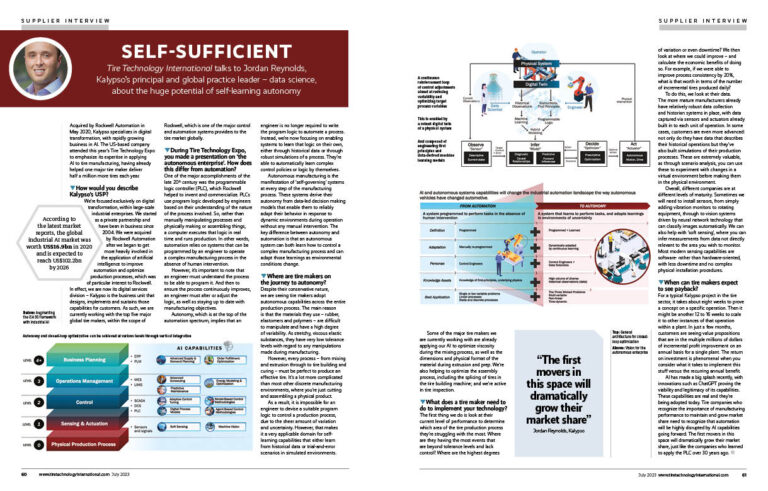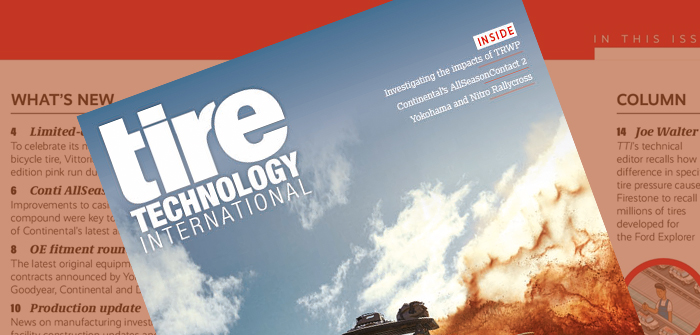 During this year’s Tire Technology Expo, Tire Technology International spoke to Jordan Reynolds (pictured), Kalypso’s principal and global practice leader – data science, about the huge potential of self-learning autonomy.
During this year’s Tire Technology Expo, Tire Technology International spoke to Jordan Reynolds (pictured), Kalypso’s principal and global practice leader – data science, about the huge potential of self-learning autonomy.
Acquired by Rockwell Automation in May 2020, Kalypso specializes in digital transformation, with rapidly growing business in AI. The US-based company attended this year’s Tire Technology Expo to emphasize its expertise in applying AI to tire manufacturing, having already helped one major tire maker deliver half a million more tires each year.
How would you describe Kalypso’s USP?
We’re focused exclusively on digital transformation, within large-scale industrial enterprises. We started as a private partnership and have been in business since 2004. We were acquired by Rockwell Automation after we began to get more heavily involved in the application of artificial intelligence to improve automation and optimize production processes, which was of particular interest to Rockwell. In effect, we are now its digital services division – Kalypso is the business unit that designs, implements and sustains those capabilities for customers. As such, we are currently working with the top five major global tire makers, within the scope of Rockwell, which is one of the major control and automation systems providers to the tire market globally.
During Tire Technology Expo, you made a presentation on ‘the autonomous enterprise’. How does this differ from automation?
One of the major accomplishments of the late 20th century was the programmable logic controller (PLC), which Rockwell helped to invent and commercialize. PLCs use program logic developed by engineers based on their understanding of the nature of the process involved. So, rather than manually manipulating processes and physically making or assembling things, a computer executes that logic in real time and runs production. In other words, automation relies on systems that can be programmed by an engineer to operate a complex manufacturing process in the absence of human intervention.
However, it’s important to note that an engineer must understand the process to be able to program it. And then to ensure the process continuously improves, an engineer must alter or adjust the logic, as well as staying up to date with manufacturing objectives.
Autonomy, which is at the top of the automation spectrum, implies that an engineer is no longer required to write the program logic to automate a process. Instead, we’re now focusing on enabling systems to learn that logic on their own, either through historical data or through robust simulations of a process. They’re able to automatically learn complex control policies or logic by themselves.
Autonomous manufacturing is the manifestation of ‘self-governing’ systems at every step of the manufacturing process. These systems derive their autonomy from data-led decision making models that enable them to reliably adapt their behavior in response to dynamic environments during operation without any manual intervention. The key difference between autonomy and automation is that an autonomous system can both learn how to control a complex manufacturing process and can adapt those learnings as environmental conditions change.
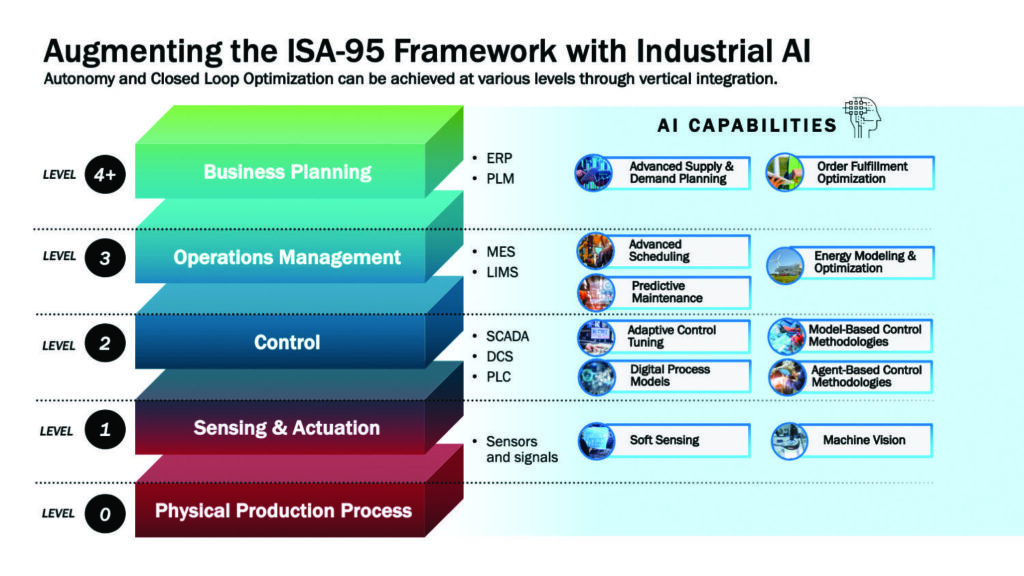
Where are tire makers on the journey to autonomy?
Despite their conservative nature, we are seeing tire makers adopt autonomous capabilities across the entire production process. The main reason is that the materials they use – rubber, elastomers and polymers – are difficult to manipulate and have a high degree of variability. As stretchy, viscous elastic substances, they have very low tolerance levels with regard to any manipulations made during manufacturing.
However, every process – from mixing and extrusion through to tire building and curing – must be perfect to produce an effective tire. It’s a lot more complicated than most other discrete manufacturing environments, where you’re just cutting and assembling a physical product.
As a result, it is impossible for an engineer to devise a suitable program logic to control a production process,
due to the sheer amount of variation and uncertainty. However, that makes it a very applicable domain for self-learning capabilities that either learn from historical data or trial-and-error scenarios in simulated environments.
Some of the major tire makers we are currently working with are already applying our AI to optimize viscosity during the mixing process, as well as the dimensions and physical format of the material during extrusion and prep. We’re also helping to optimize the assembly process, including the splicing of tires in the tire building machine; and we’re active in tire inspection.
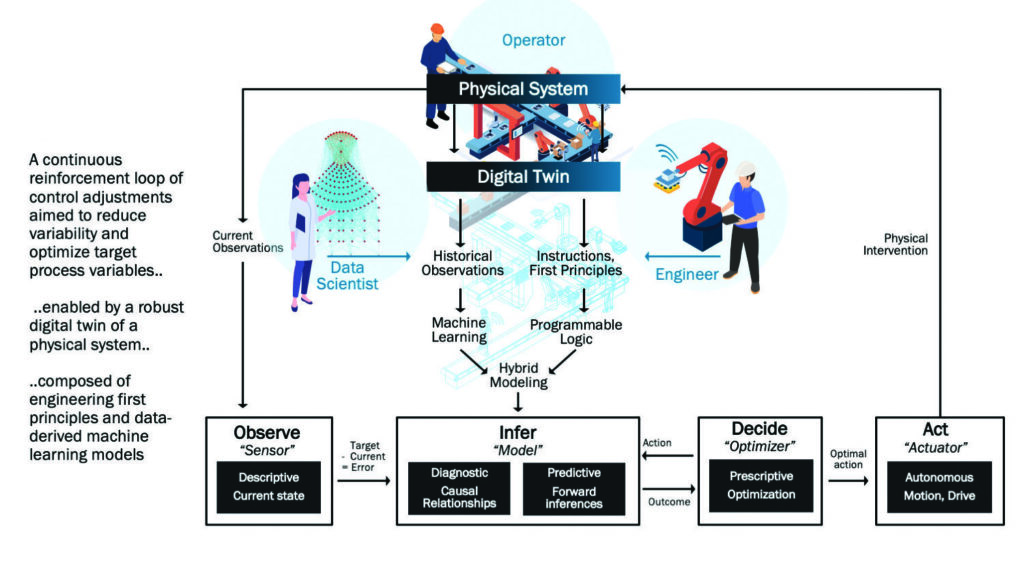
What does a tire maker need to do to implement your technology?
The first thing we do is look at their current level of performance to determine which area of the tire production process they’re struggling with the most. Where are they having the most events that are beyond tolerance levels and lack control? Where are the highest degrees of variation or even downtime? We then look at where we could improve – and calculate the economic benefits of doing so. For example, if we were able to improve process consistency by 20%, what is that worth in terms of the number of incremental tires produced daily?
To do this, we look at their data. The more mature manufacturers already have relatively robust data collection and historian systems in place, with data captured via sensors and actuators already built in to each unit of operation. In some cases, customers are even more advanced: not only do they have data that describes their historical operations but they’ve also built simulations of their production processes. These are extremely valuable, as through scenario analysis, you can use these to experiment with changes in a virtual environment before making them in the physical environment.
Overall, different companies are at different levels of maturity. Sometimes we will need to install sensors, from simply adding vibration monitors to rotating equipment, through to vision systems driven by neural network technology that can classify images automatically. We can also help with ‘soft sensing’, where you can infer measurements from data not directly relevant to the area you wish to monitor. Most modern sensing capabilities are software- rather than hardware-oriented, with less downtime and no complex physical installation procedures.
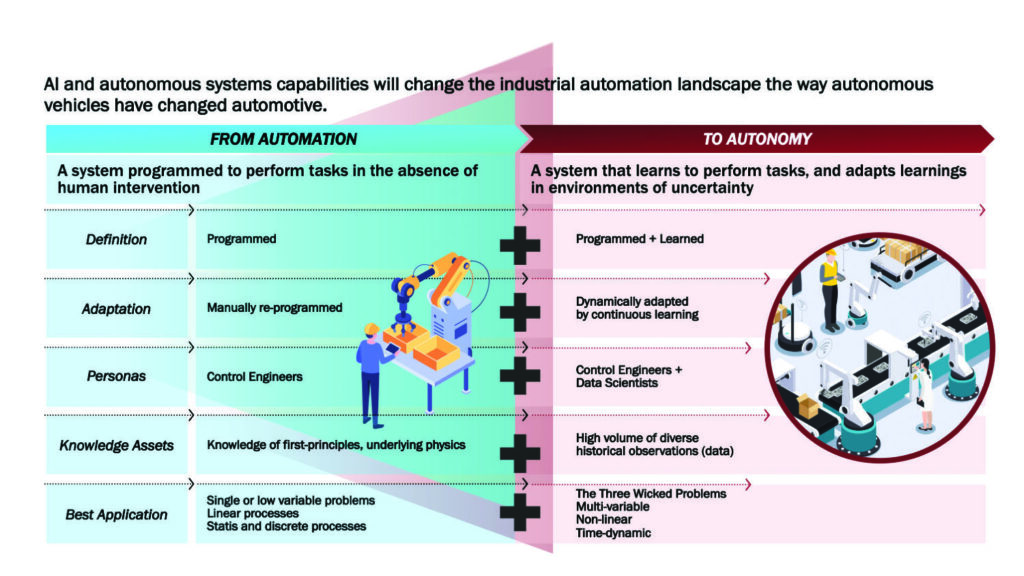
When can tire makers expect to see payback?
For a typical Kalypso project in the tire sector, it takes about eight weeks to prove a concept on a specific operation. Then it might be another 12 to 16 weeks to scale it to other instances of that operation within a plant. In just a few months, customers are seeing value propositions that are in the multiple millions of dollars of incremental profit improvement on an annual basis for a single plant. The return on investment is phenomenal when you consider what it takes to implement this stuff versus the recurring annual benefit.
AI has made a big splash recently, with innovations such as ChatGPT proving the viability and legitimacy of its capabilities. These capabilities are real and they’re being adopted today. Tire companies who recognize the importance of manufacturing performance to maintain and grow market share need to recognize that automation will be highly disrupted by AI capabilities going forward. The first movers in this space will dramatically grow their market share, just like the companies who learned to apply the PLC over 30 years ago.
This interview was first published in the July 2023 issue of Tire Technology International. You can read the article in its original magazine format here


